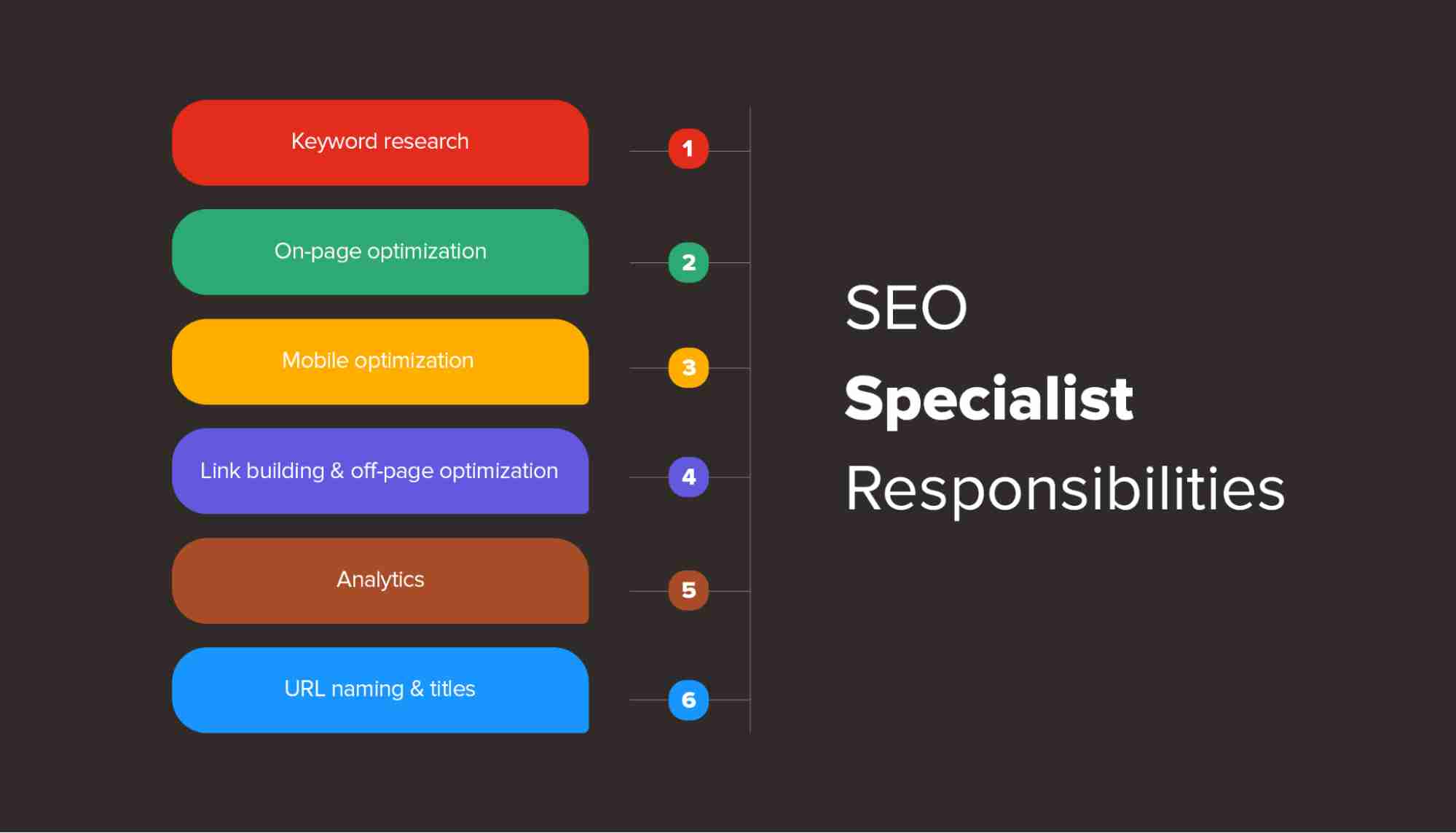SEARCH ENGINE OPTIMIZATION Vs. SEM: Recognizing the Trick Distinctions
Worldwide of electronic marketing, two important techniques that usually come up are SEO and SEM. While they may seem comparable, they actually offer various objectives and have distinctive techniques. SEARCH ENGINE OPTIMIZATION, which means Seo, concentrates on improving a website's visibility and natural position on search engine results pages. On the various other hand, SEM, or Search Engine Advertising and marketing, involves paid marketing to boost a website's presence on search engines. Recognizing the crucial distinctions between SEO and SEM is essential for services seeking to maximize their online presence and drive web traffic to their sites. In this short article, we will look into the interpretations, goals, and vital elements of both SEO and SEM, clarifying their distinct characteristics and advantages.

Meaning of SEO
SEO, or Look Engine Optimization, describes the method of optimizing websites to boost their exposure and rankings on search engine results web pages (SERPs) It includes different techniques and strategies intended at boosting natural, or non-paid, traffic to a web site. The ultimate objective of SEO is to boost a web site's on-line visibility and bring in even more targeted site visitors.
One of the key facets of SEO is keyword optimization (https://sports.easterntribunal.com/news/linkdaddy-announces-agency-backlink-local-business-directory-listings-service/458323). This involves performing extensive research to recognize pertinent search phrases that individuals are likely to search for when searching for information or items connected to a particular website. By integrating these key words tactically into the website's web content, meta tags, and Links, search engine optimization intends to boost the site's significance and position for those details search terms
Another essential aspect in search engine optimization is on-page optimization. This involves maximizing numerous components on a site, such as title tags, headings, photos, and inner links, to make them even more search engine-friendly (seo audit). By guaranteeing that these elements are effectively structured and appropriate to the site's web content, search engine optimization assists search engines comprehend the context and significance of the website
Additionally, SEO likewise consists of off-page optimization strategies, such as web link building. This involves obtaining premium backlinks from various other trustworthy sites, which suggests to look engines that the website is reliable and authoritative. By developing a solid network of backlinks, search engine optimization enhances a site's reliability and enhances its possibilities of placing greater in search results page.
Definition of SEM
SEM, or Browse Engine Advertising, is an advertising technique that involves advertising websites and raising their exposure via paid advertising on online search engine results web pages (SERPs) Unlike SEO, which concentrates on maximizing websites to enhance natural search rankings, SEM uses paid advertising and marketing to drive website traffic to an internet site.
Among the key parts of SEM is pay-per-click (PAY PER CLICK) advertising and marketing. With pay per click, advertisers bid on keyword phrases that are appropriate to their target audience. When a user look for those keyword phrases, the ads show up at the leading or side of the search engine result. Advertisers only pay when a customer clicks their ad, thus the term "pay-per-click."

Present ads are banners or aesthetic ads that show up on sites within the Google Present Network. Remarketing ads target users that have formerly seen a web site, serving them ads as they search other websites.
Goals of SEO and SEM
The goals of both search engine optimization (SEO) and search engine advertising and marketing (SEM) focus on increasing a web site's presence and driving targeted web traffic. Nonetheless, the strategies and methods utilized by each vary considerably.
The primary objective of search engine optimization is to boost a website's organic search ranking on internet search engine results web pages (SERPs) This is achieved by optimizing various elements on the site, such as material, meta tags, and site structure, to make it much more attractive and appropriate to internet search engine. By doing so, SEO aims to attract even more natural website traffic from customers proactively looking for related key phrases or subjects.
On the various other hand, SEM focuses on enhancing a site's exposure via paid marketing on internet search engine. The primary goal of SEM is to drive targeted website traffic to an internet site by bidding on key words and showing ads in internet search engine results. This technique permits organizations to reach a larger audience promptly and properly.

Key Components of SEO
To effectively execute SEO, it is important to comprehend the crucial parts that add to boosting a website's organic search position. These elements can be generally categorized into on-page variables and off-page factors.
On-page aspects describe the aspects that are straight present on a site and can be optimized for far better search engine presence. This consists of the web site's material, keyword phrase usage, meta tags, link framework, page titles, and headings. By optimizing these elements, search engines can much better recognize the significance and context of the site's content, causing higher rankings.
Off-page variables, on the various other hand, focus on external signals that affect a web site's authority and trustworthiness. This consists of backlinks from other respectable web sites, social networks signals, and on the internet discusses (https://e-rumormill.com/news/linkdaddy-announces-agency-backlink-local-business-directory-listings-service/458323). The even more relevant and premium back links an internet site has, the far better its chances of ranking greater in online search engine results web pages
Furthermore, customer experience is a vital component of SEO. link building. Online search engine focus on web sites that use a positive individual experience, including fast loading times, mobile-friendliness, and simple navigation
Secret Components of SEM
As opposed to SEO, SEM encompasses a distinct set of key parts that concentrate on paid advertising and driving immediate visibility in internet search engine results. These parts consist of internet search engine marketing, also referred to as pay-per-click (PPC) advertising, keyword research study, advertisement production, and campaign management.
Browse engine advertising and marketing is a crucial element of SEM. When those search phrases are looked, it entails bidding on key phrases relevant to your service and developing text or screen advertisements that will appear in search engine results. With internet search engine advertising, you can target particular demographics, areas, and also time of day to reach your desired audience.
Keyword research study is an additional vital element of SEM. It includes recognizing the keywords that your target audience is utilizing to look for services or products similar to yours. By carrying out complete keyword study, you can maximize your ads and ensure they are shown to the best people at the best time.
Ad development is the procedure of creating engaging and influential advertisements that will certainly entice users to click on them. Well-crafted ads have a strong call-to-action, relevant messaging, and a clear value proposal.
Finally, campaign administration includes tracking and maximizing your SEM projects to guarantee they are doing successfully. This consists of monitoring metrics such as click-through prices, conversion rates, and roi (ROI) to make data-driven decisions and accomplish the very best outcomes.
Final Thought
Finally, SEO and SEM are 2 distinct techniques in electronic advertising and marketing. SEO focuses on optimizing web sites to boost natural search positions, while SEM entails paid advertising to enhance exposure on online search engine results web pages. Both methods have their very own purposes and vital parts that add to their performance. Understanding the differences between SEO and SEM is important for services to establish a detailed online advertising and marketing strategy.
SEARCH ENGINE OPTIMIZATION, which stands for Look Engine Optimization, focuses on improving a website's presence and natural ranking on search engine results pages. On the various other hand, SEM, or Browse Engine Marketing, entails paid advertising and marketing to enhance a website's presence on search this link engines (seo optimization).SEO, or Search Engine Optimization, refers to the technique of enhancing websites to boost their exposure and rankings on search engine results web pages (SERPs)The main objective of SEO is to boost a web site's organic search position on search engine results pages (SERPs) Search engine optimization focuses on enhancing websites to enhance organic search positions, while SEM includes paid advertising to boost visibility on search engine results web pages